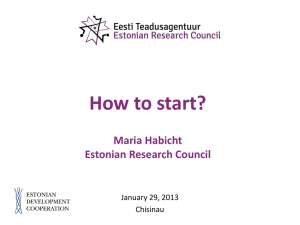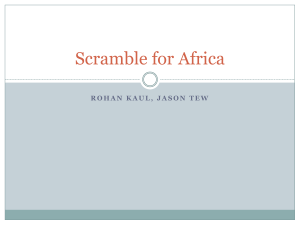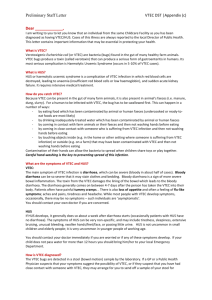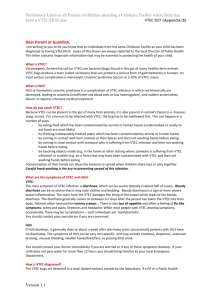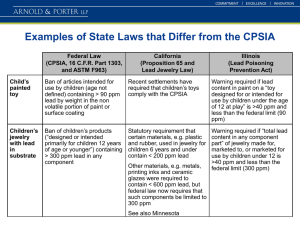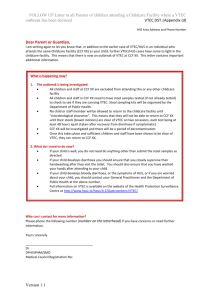PowerPoint-præsentation
advertisement
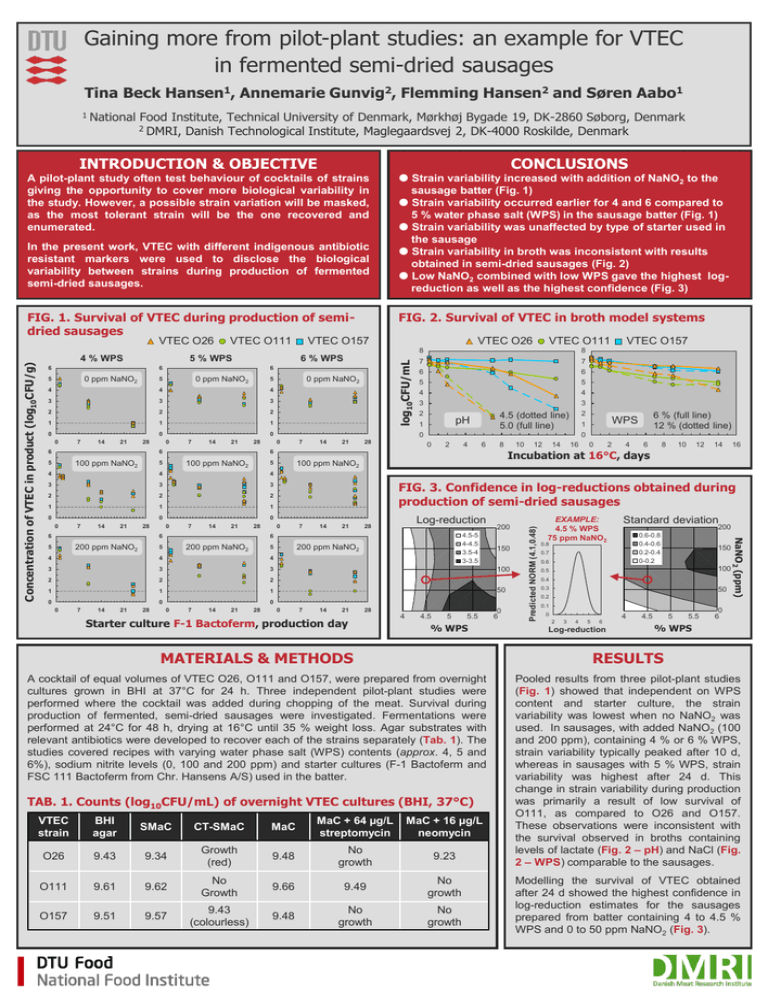
Gaining more from pilot-plant studies: an example for VTEC in fermented semi-dried sausages Tina Beck Hansen1, Annemarie Gunvig2, Flemming Hansen2 and Søren Aabo1 National Food Institute, Technical University of Denmark, Mørkhøj Bygade 19, DK-2860 Søborg, Denmark 2 DMRI, Danish Technological Institute, Maglegaardsvej 2, DK-4000 Roskilde, Denmark INTRODUCTION & OBJECTIVE CONCLUSIONS A pilot-plant study often test behaviour of cocktails of strains giving the opportunity to cover more biological variability in the study. However, a possible strain variation will be masked, as the most tolerant strain will be the one recovered and enumerated. In the present work, VTEC with different indigenous antibiotic resistant markers were used to disclose the biological variability between strains during production of fermented semi-dried sausages. FIG. 1. Survival of VTEC during production of semidried sausages VTEC O111 6 6 0 ppm NaNO2 5 6 0 ppm NaNO2 5 4 4 3 3 3 2 2 2 1 1 1 0 0 0 0 7 14 21 28 0 7 14 21 28 6 100 ppm NaNO2 5 100 ppm NaNO2 5 3 3 3 2 2 2 1 1 1 0 0 7 14 21 28 200 ppm NaNO2 7 14 21 28 200 ppm NaNO2 5 3 3 3 2 2 2 1 1 1 0 0 0 21 28 6 5 5 4 4 3 3 2 0 7 14 21 28 2 4.5 (dotted line) 5.0 (full line) pH 1 14 21 28 6 % (full line) 12 % (dotted line) WPS 1 0 0 2 4 6 8 10 12 14 16 0 2 4 6 8 10 12 14 16 Incubation at 16°C, days 7 14 21 Log-reduction 28 4.5-5 4-4.5 3.5-4 3-3.5 200 ppm NaNO2 5 4 14 7 6 VTEC O157 FIG. 3. Confidence in log-reductions obtained during production of semi-dried sausages 0 4 7 7 6 4 0 7 0 0 6 5 8 100 ppm NaNO2 5 4 VTEC O111 0 0 4 6 VTEC O26 8 6 4 0 0 ppm NaNO2 5 4 6 VTEC O157 6 % WPS log10CFU/mL 5 % WPS FIG. 2. Survival of VTEC in broth model systems 200 150 100 50 0 7 14 21 28 Starter culture F-1 Bactoferm, production day 4 4.5 5 5.5 % WPS 0 6 EXAMPLE: 4.5 % WPS 75 ppm NaNO2 Standard deviation 200 0.6-0.8 0.4-0.6 0.2-0.4 0-0.2 0.8 0.7 0.6 150 100 0.5 0.4 0.3 50 0.2 0.1 0 2 3 4 5 6 Log-reduction 4 4.5 5 5.5 NaNO2 (ppm) Concentration of VTEC in product (log10CFU/g) VTEC O26 4 % WPS Strain variability increased with addition of NaNO2 to the sausage batter (Fig. 1) Strain variability occurred earlier for 4 and 6 compared to 5 % water phase salt (WPS) in the sausage batter (Fig. 1) Strain variability was unaffected by type of starter used in the sausage Strain variability in broth was inconsistent with results obtained in semi-dried sausages (Fig. 2) Low NaNO2 combined with low WPS gave the highest logreduction as well as the highest confidence (Fig. 3) Predicted NORM (4.1,0.48) 1 0 6 % WPS MATERIALS & METHODS RESULTS A cocktail of equal volumes of VTEC O26, O111 and O157, were prepared from overnight cultures grown in BHI at 37°C for 24 h. Three independent pilot-plant studies were performed where the cocktail was added during chopping of the meat. Survival during production of fermented, semi-dried sausages were investigated. Fermentations were performed at 24°C for 48 h, drying at 16°C until 35 % weight loss. Agar substrates with relevant antibiotics were developed to recover each of the strains separately (Tab. 1). The studies covered recipes with varying water phase salt (WPS) contents (approx. 4, 5 and 6%), sodium nitrite levels (0, 100 and 200 ppm) and starter cultures (F-1 Bactoferm and FSC 111 Bactoferm from Chr. Hansens A/S) used in the batter. Pooled results from three pilot-plant studies (Fig. 1) showed that independent on WPS content and starter culture, the strain variability was lowest when no NaNO2 was used. In sausages, with added NaNO2 (100 and 200 ppm), containing 4 % or 6 % WPS, strain variability typically peaked after 10 d, whereas in sausages with 5 % WPS, strain variability was highest after 24 d. This change in strain variability during production was primarily a result of low survival of O111, as compared to O26 and O157. These observations were inconsistent with the survival observed in broths containing levels of lactate (Fig. 2 – pH) and NaCl (Fig. 2 – WPS) comparable to the sausages. TAB. 1. Counts (log10CFU/mL) of overnight VTEC cultures (BHI, 37°C) VTEC strain BHI agar SMaC CT-SMaC MaC MaC + 64 µg/L streptomycin MaC + 16 µg/L neomycin O26 9.43 9.34 Growth (red) 9.48 No growth 9.23 O111 9.61 9.62 No Growth 9.66 9.49 No growth O157 9.51 9.57 9.43 (colourless) 9.48 No growth No growth Modelling the survival of VTEC obtained after 24 d showed the highest confidence in log-reduction estimates for the sausages prepared from batter containing 4 to 4.5 % WPS and 0 to 50 ppm NaNO2 (Fig. 3).




